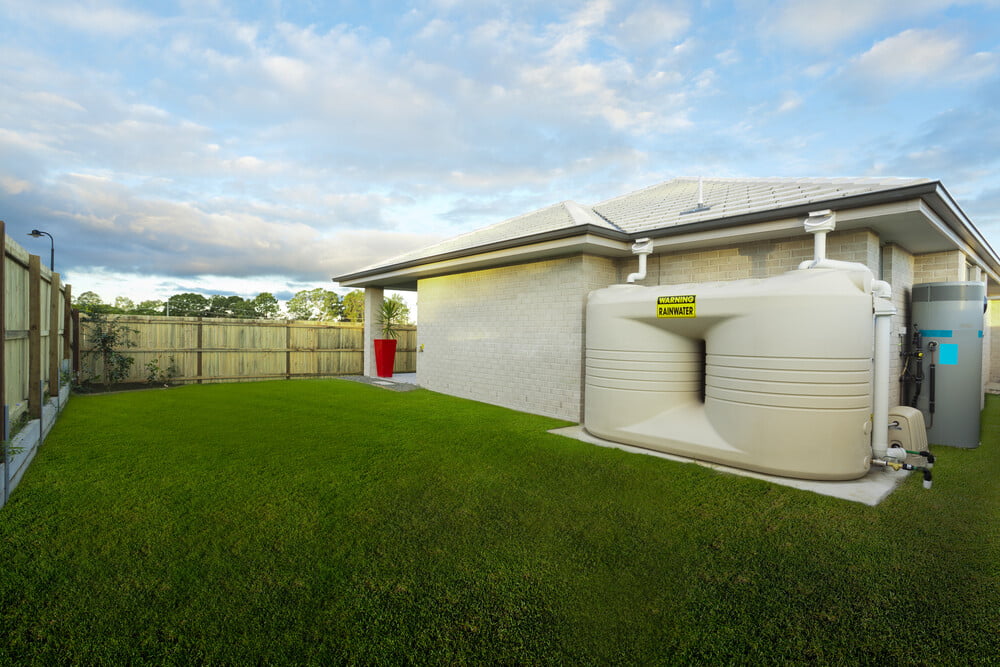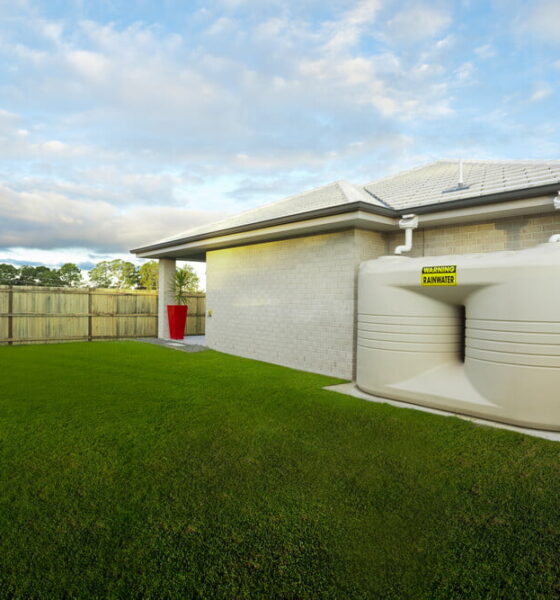Rainwater collection is becoming a much more popular concept these days. A growing number of people are using it to store water in the event of a drought, natural disaster, nuclear fallout or other emergency. They are also using it to make it easier to water their vegetables. This is why it is such a common practice among preppers, but other people are doing it as well.
There are very efficient ways to collect rainwater these days. The amount of water they can collect is surprising. A relatively small catchment that has a surface area of just 100 square feet can collect up to 1,000 gallons of rainwater in many parts of the world!
While rainwater harvesting has numerous benefits, you need to make sure that it collected safely and efficiently. Here are some tips to keep in mind.
Rainwater Collection Safety Methods
- Never drink collected rainwater that has not been filtered. Raindrops pick up harmful substances as they fall from the sky to the tank. They also soak up particles of animal waste on gutters and roof shingles. While you can use filtered water for gardening, landscaping, and washing cars, it’s important that the water collected goes through a decontamination process before it can be consumed.
- Never water vegetables with collected rainwater that has not yet been filtered. Not only will this harm the vegetables, you will also end up consuming the dirty water if you will eat those vegetables. If you have to use the unfiltered rainwater for gardening, use it on flowers, trees, shrubs, as well as other types of plants that are not edible instead.
- Never use harvested rainwater for the swimming pool. Any bacteria, parasites, fungi or even viruses on it are harmful to the skin, eyes, mouth, and even internal organs. Also, standing rainwater is the perfect breeding ground for mosquitoes, which carry diseases.
- Never allow collected rainwater to pool anywhere in your property or in your collection system. As mentioned above, pooled water is the perfect breeding ground for mosquitoes.
- Have a good gutter in place to make sure the rainwater can be reliably diverted to the source in question. Aluminium guttering can be very helpful.
- Make sure that every storage tank is secured. Water storage tanks are bulky and could cause injuries if they fall on people. When full of rainwater, not only can they cause bones to break and internal organs to get crushed (when they fall), they are also drowning hazards.
To expound on the last point, curious kids might fall in there after displacing the lids, and they might never be found until signs like bad smells and the darkening of the water start to get noticed. Thus, it’s important that storage tanks are secured with locks, braces, or any other way of securing them.
- Exercise caution when cleaning the rainwater harvesting system. Accidents related to the routine maintenance of components of this system are a real risk, after all. You can end up with broken bones after falling off a ladder, for example. So when cleaning the gutter, reattaching the pipes, or servicing the rainwater storage tank, take all necessary safety precautions like ensuring that the ladder is on an even surface before climbing it.
Rainwater Collection is a Great Idea, but Must Be Done Safely
Whether you are a prepper, gardener or just preparing for a looming water shortage, storing collected rainwater is a great idea. However, you need to make sure that it is done safely. Protecting your family from the harmful particles that get stored in it is very important. You also need to make sure that children won’t get hurt by the catchments that you install. The good news is that these risks are very low if you follow the safety guidelines listed above.
About Author –
Rey Carlos Rosales works as a rainwater collection and storage tanks subject matter expert for Rainwater Tanks Direct. Outside of the office, he plays video games, indulges in quality literature, watches movies, and spends time with cats, dogs, and other adorable animals. For rainwater collection tank options, choose Rainwater Tanks Direct: http://www.rainwatertanksdirect.com.au/


 Environment10 months ago
Environment10 months agoAre Polymer Banknotes: an Eco-Friendly Trend or a Groundswell?

 Environment11 months ago
Environment11 months agoEco-Friendly Home Improvements: Top 7 Upgrades for 2025

 Features9 months ago
Features9 months agoEco-Friendly Cryptocurrencies: Sustainable Investment Choices

 Features10 months ago
Features10 months agoEco-Friendly Crypto Traders Must Find the Right Exchange































